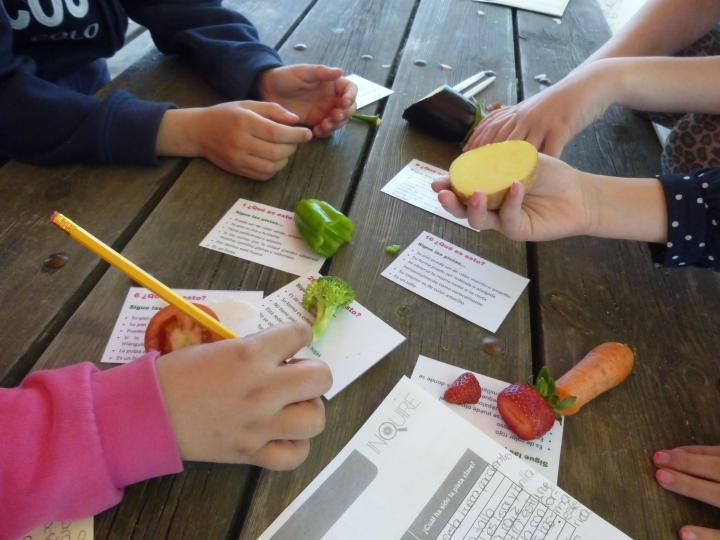Healthy SnackResist junk food options by designing your own healthy snack

Ready for action?
What
The possible connections with your curriculum
Who
The people who take up the teacher role
Where
The locations where learning takes place
With
The community stakeholders to collaborate with
Short abstract
In this Learning Scenario, students will explore the concept of snacks and will design healthy alternatives that are just as appealing. They will cooperate with a local farm, dietician, packaging designer and restaurant. They will also design sustainable packaging, a recipe book, and bring their product to (a small) market.
Students will create and distribute a survey to students and members of the community regarding habits related to snacking during the day (what, where, when, how much) in preparation for the Learning Scenario.
An introduction to the assignment. As young people eat more and more snacks, students will ask how we can compare snack-culture from different countries? What are young people around the world eating? They will investigate what snacks are favourite – savoury, sugary, salty or fatty? Students will analyse the collected survey data, compare it to data from online research, and discuss how they can compare snack-culture from different countries.
While crisps, chocolate and other snacks can be delicious, many people are worried that young people eat too much of these kinds of foods. Advertising and marketing is another controversial area. Some people feel that advertising for junk food and unhealthy snacks should not be directed at children and teenagers. Students will debate if they are eating too many unhealthy snacks and whether there should be more controls to protect young people from unhealthy food. Students will collect packaging from food products in and around the school and research how truthful this packaging actually is. They will compare what’s actually in the snack with what the packaging claims.
Everyone needs good nutrition for a healthy and enjoyable life. What we eat during the day has an immediate and long-term effect on our mind and body. Students will meet an expert in the field of health and nutrition who specialises in dietetics. During the session, students will learn about the importance of tailoring nutrition to individual needs in pursuit of improved physical and mental health.
Students will carry out research about nutritional values of food which is available in their community, and combine the outcomes of the research with what they have learned from the dietitian about nutrition. They will carry out comparative research and investigate how what is available locally matches their needs.
Students will design new ‘honest’ packaging for the food products that they investigated in LU2 and previous Learning Units. They will convert the original packaging to their honest packaging which will explain - truthfully - what the product does for your body, mind and wellness. They will then share what they have learnt with the community.
Students will visit a local farm or allotment and learn about the time and effort it takes to grow and process food. They will select products from the farm/garden and try to recreate their families’ favourite recipe. Not everything they need for their recipe grows locally – students will learn how food and spices travel long distances around the world to eventually end up on their plate.
With the use of technology and engineering we can make food more affordable.
Students will design honest and appealing packaging for their snack. It must communicate the ingredients and their origin, ecological footprint and nutritional value. They should design the packaging to be both attractive and to protect/preserve the product as well as possible.
Students will collect everything they have learned in a recipe book composed of a collection of all the snacks and their ingredients. For each ingredient, students say where it comes from and the ecological impact of the ingredient. It will also state the nutritional value and health benefits of the product. They will devise an event to share their cookbook with the local community.
Students will prepare for their event, inviting relevant members of the community including parents, partners and local food businesses. They will arrange a stand to present their data visualisations, cookbook, packaging and opportunities to taste the actual snacks. Through this event they will disseminate their knowledge in a fun and informative manner.
Teacher feedback
Aha moments
Uh oh moments
General tips
- LU5: It can be quite challenging and time-consuming to learn new software to redesign the packaging while also investigating the information and producing the actual packaging. To simplify the assignment students can take pictures of the design elements, claims, ingredients list and nutritional facts, etc. and redesign the packaging by scaling up and repositioning the facts in comparison to the claims.